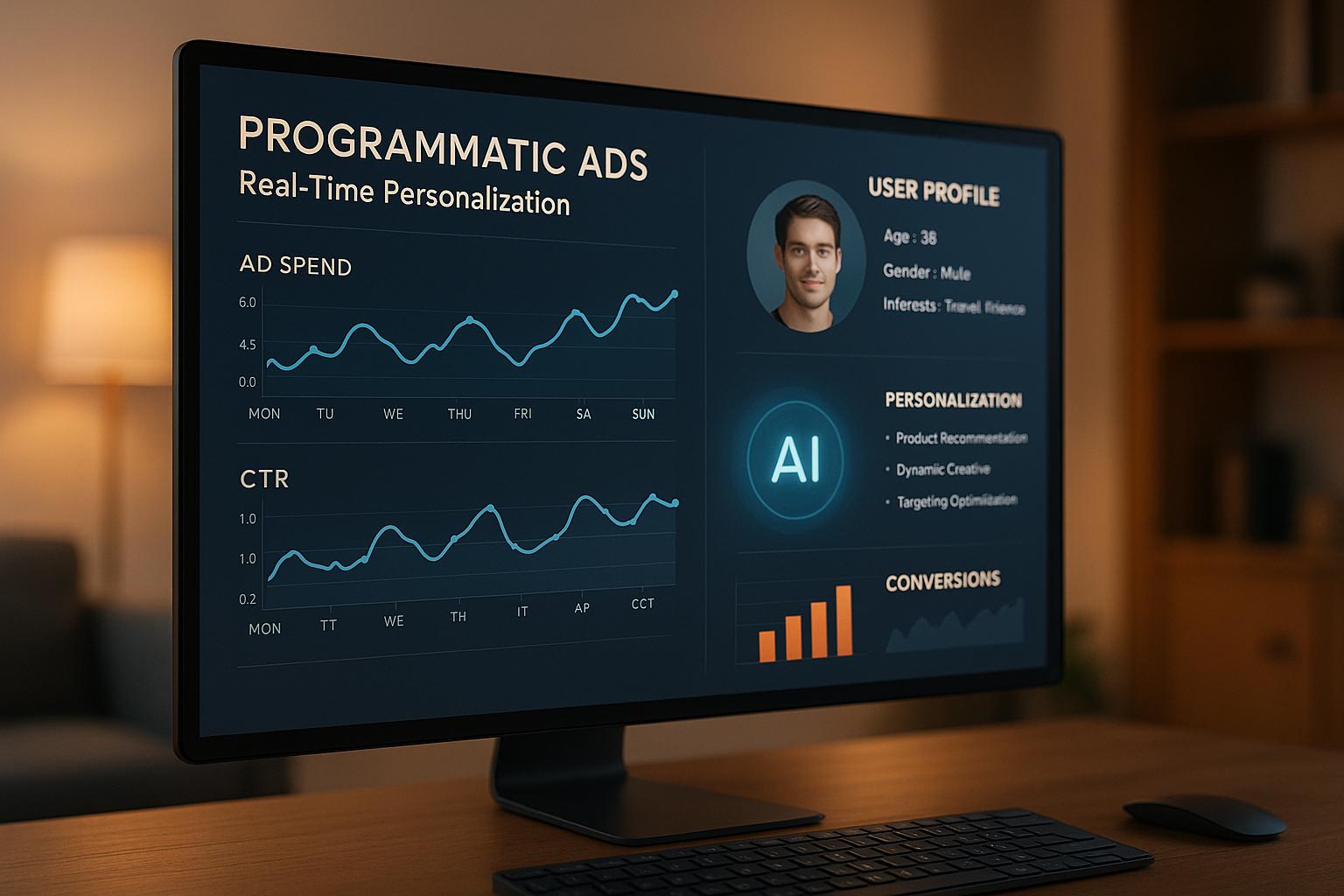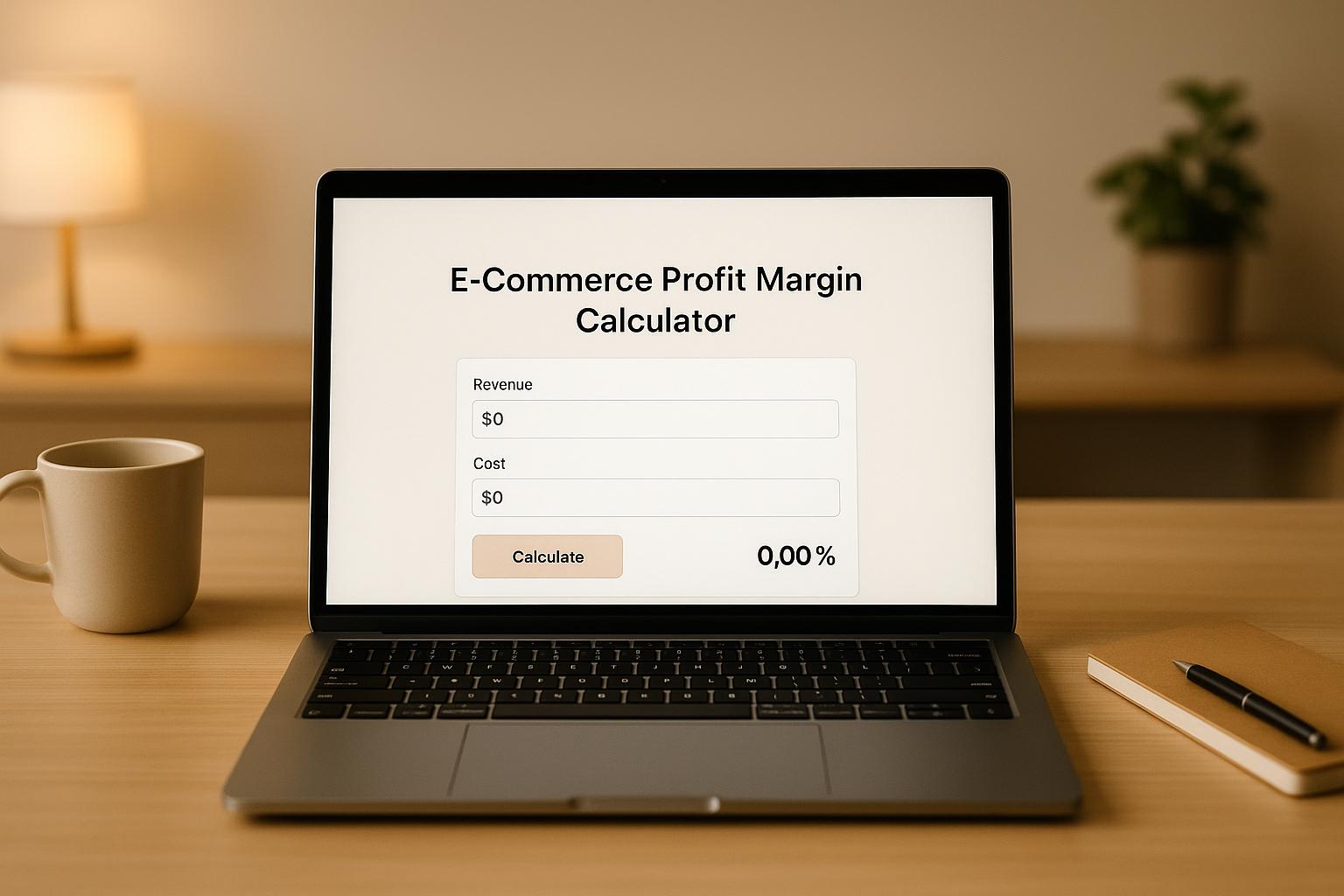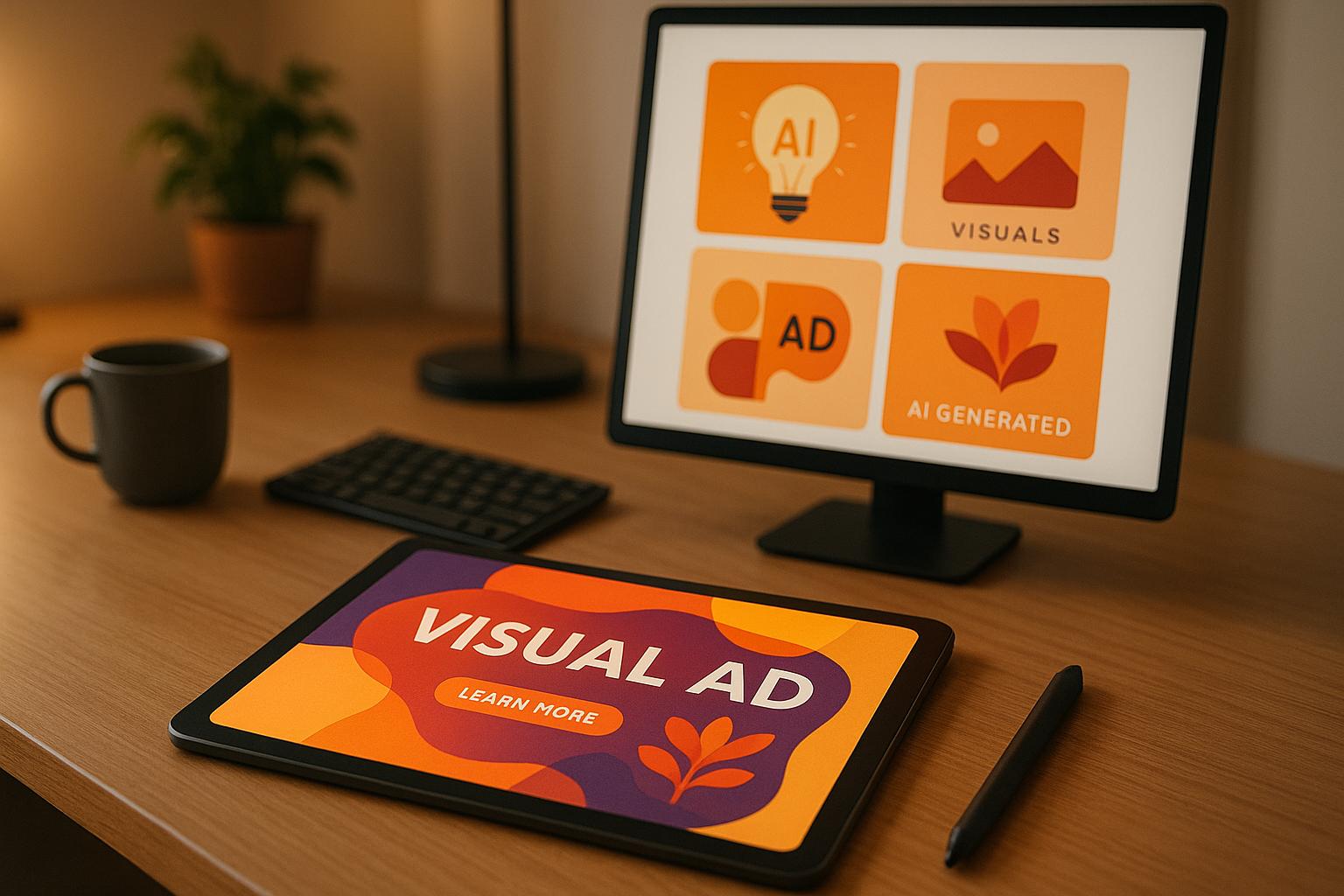Guide to AI-Powered Shopping Ads
AI-powered shopping ads are transforming e-commerce advertising by using artificial intelligence to create personalized, data-driven campaigns that improve engagement and sales. Here's what you need to know:
- What They Are: These ads leverage AI to analyze user behavior, product data, and market trends to deliver tailored ads in real time.
- Why They Matter: Personalization drives higher click-through rates and conversions by aligning ads with individual shopper preferences like browsing history, price sensitivity, and seasonal trends.
- How AI Helps: AI optimizes campaigns by automating ad creation, targeting, and bidding across platforms like Google Shopping, Facebook, and Instagram.
- Key Tools: Platforms like Feedcast.ai simplify managing product data, syncing inventory updates, and optimizing ad performance using AI.
AI-powered ads are reshaping how businesses approach digital marketing, making campaigns more efficient and precise. Learn how to use tools, strategies, and metrics to maximize results.
I Got AI To Optimize Google Shopping In 10 Minutes [Free AI Tool Included]
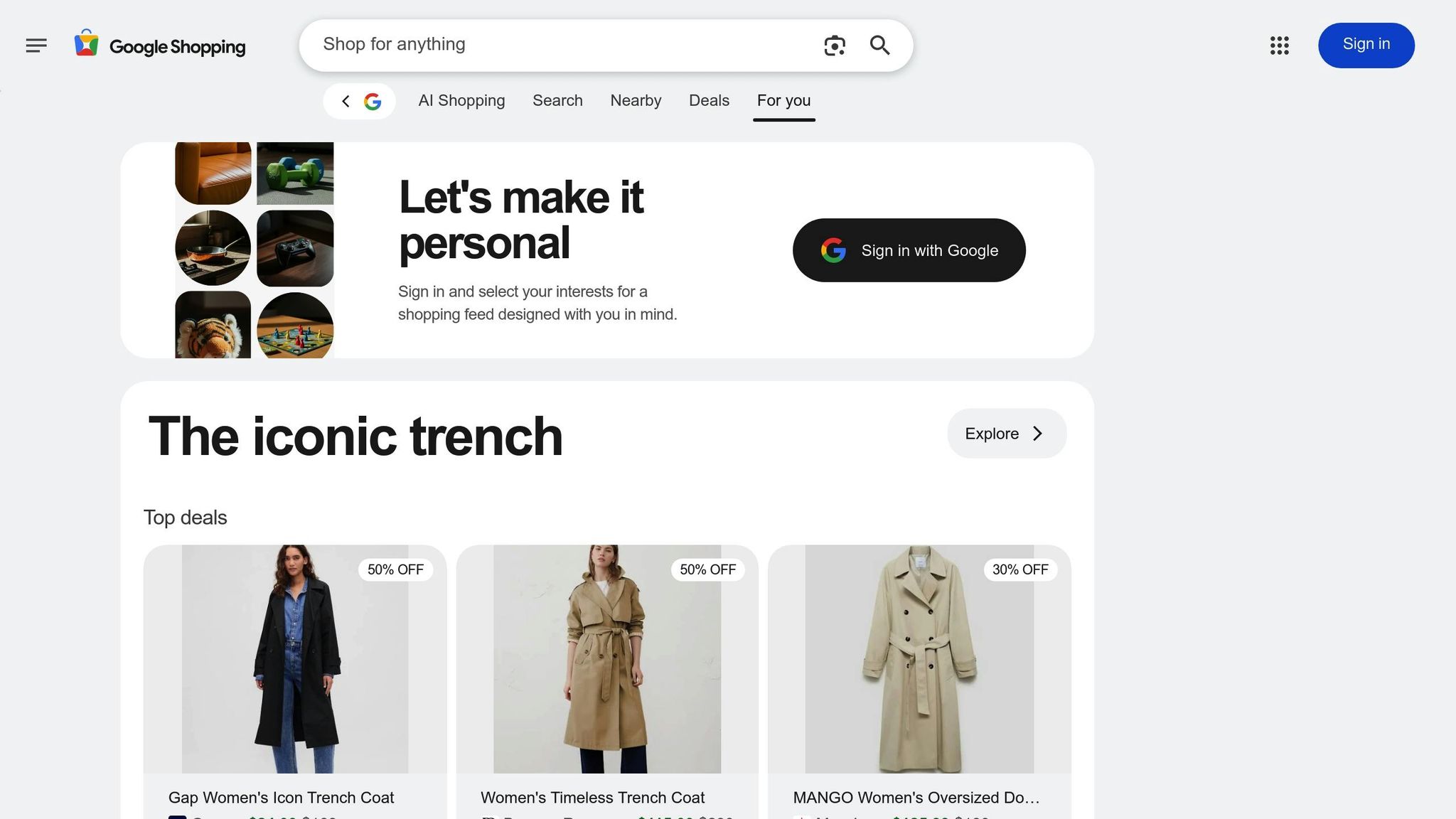
Tools for AI-Driven Ad Copy Personalization
Platforms like Feedcast.ai make managing tasks such as product data handling and cross-channel campaign setup much simpler, bringing advanced personalization within reach. Here's a closer look at how Feedcast.ai streamlines these processes.
Feedcast.ai: Simplifying AI-Powered Shopping Campaigns
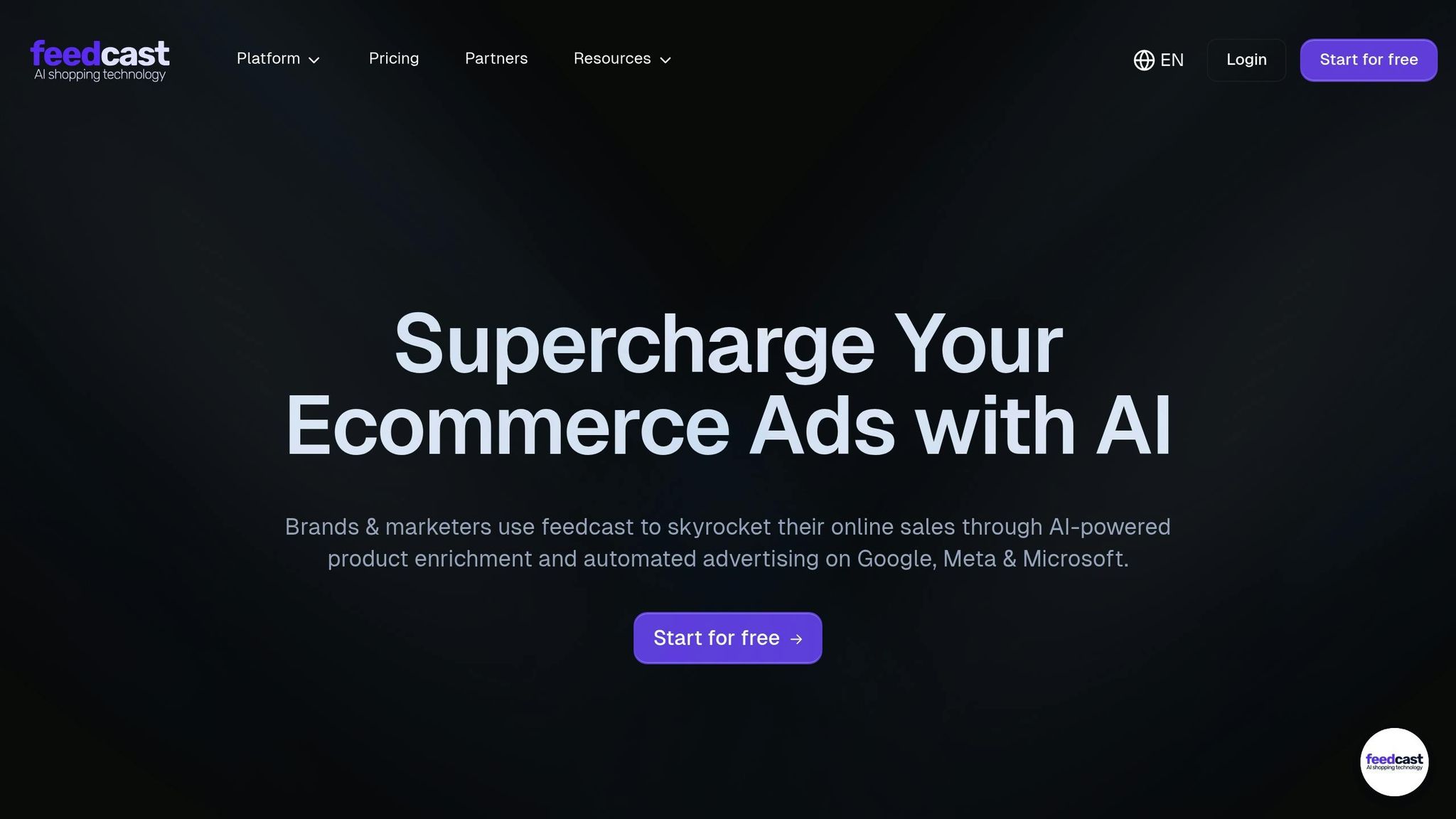
Feedcast.ai is designed to centralize AI-based personalization for e-commerce advertising. It integrates major advertising platforms - Google, Meta (Facebook and Instagram), and Microsoft Ads - into a single, easy-to-use dashboard.
One standout feature is its AI-powered product data enrichment. This tool automatically enhances product titles, descriptions, and attributes, boosting both visibility and ad performance. Additionally, Feedcast.ai's targeting capabilities help expand your audience reach while re-engaging past customers, ensuring your campaigns focus on those most likely to convert.
As a certified Google CSS (Comparison Shopping Service) partner, Feedcast.ai also offers exclusive perks for Google Shopping campaigns, making it easier to maximize your return on ad spend.
Managing Product Feeds Made Simple
Feedcast.ai takes the hassle out of managing product data for ad campaigns. It supports direct imports from popular e-commerce platforms like Shopify, WooCommerce, and PrestaShop. For businesses using custom systems or multiple data sources, it also accepts files in formats such as Google Sheets, CSV, and XML. Plus, the platform automatically detects and resolves feed errors, ensuring your campaigns run smoothly.
Another key advantage is its automatic syncing of inventory and pricing updates. Any changes to stock levels, prices, or product descriptions in your e-commerce system are instantly reflected in your ad campaigns. This keeps your ads accurate and aligned with real-time product availability.
Smarter Ad Optimization with AI
Feedcast.ai goes beyond managing product feeds - it also fine-tunes your ad content in real time. Its AI automates campaign management, generating personalized ad copy tailored to each advertising channel. For example, it adjusts messaging to suit platforms like Google Shopping or social media, ensuring the right tone for each audience.
The platform’s unified dashboard provides real-time metrics and custom reports, helping you refine targeting and ad creatives continuously. This ensures your budget is directed toward the most effective strategies and high-performing combinations.
Another powerful feature is the ability to launch smart shopping campaigns based on product data. This is particularly useful for testing new products or entering new markets, as it eliminates the need for extensive manual setup. For businesses with large or diverse product catalogs, Feedcast.ai’s automation scales effortlessly, optimizing countless product ads simultaneously - something manual management simply can’t compete with.
Strategies for Personalizing Ad Copy in Shopping Campaigns
Personalization is the secret ingredient that makes AI-powered shopping ads stand out. By tailoring messages to individual shoppers, you can create ad copy that feels relevant and engaging, increasing the chances of clicks and conversions. Here’s how to make your ads connect on a personal level.
Dynamic Ad Copy With Product Details
AI takes personalization to a new level by automatically adding specific product details to your ad copy. This isn’t just about dropping in a product name - it’s about crafting messages that highlight key elements like pricing, features, availability, and promotions.
- Price-sensitive messaging speaks directly to budget-conscious shoppers. For example, instead of a bland "Shop Now", AI might generate something like "Save 25% on Premium Wireless Headphones – Limited Stock!" when a sale is active and inventory is low.
- Feature-focused copy showcases what makes a product special. If you’re selling smartphones, AI might highlight "128GB Storage + Triple Camera System" for photography lovers or "All-Day Battery Life + Fast Charging" for busy professionals.
- Availability-driven messaging taps into urgency. Using real-time inventory data, AI can trigger lines like "Only 3 Left in Stock" or "Back in Stock – Order Today", which work particularly well for high-demand or seasonal items.
Dynamic ad copy is always up-to-date, adjusting instantly to reflect changes in inventory, prices, or promotions. This ensures your ads remain relevant and timely.
Audience Segmentation and Behavioral Targeting
AI doesn’t just look at who your shoppers are - it digs into how they behave. By analyzing patterns, preferences, and purchase intent, it segments audiences and delivers tailored messages to different groups.
- Purchase history segmentation creates unique ad experiences for first-time visitors and returning customers. New visitors might see ads focusing on brand trust, customer reviews, or introductory offers, while loyal buyers could get promotions for new arrivals, loyalty perks, or complementary products.
- Browsing behavior targeting uses data on what shoppers view, how long they linger, and what they add to their carts. For example, if someone keeps revisiting a product but hasn’t purchased, AI might serve them an ad with a special discount or a glowing customer review to ease their doubts.
- Cross-device personalization ensures continuity as shoppers switch between devices. If someone browses a product on their phone during lunch, they might see a follow-up ad with more details or a limited-time offer on their laptop later.
- Lookalike audience creation finds new customers who resemble your best buyers. AI analyzes successful customer profiles and targets similar prospects with ads that highlight benefits proven to resonate.
By combining multiple data points, AI creates micro-segments that go beyond broad categories like "women aged 25-35." Instead, it might target "working moms who shop for organic products on weekends and prefer express shipping", delivering messages that feel spot-on.
Seasonal and Event-Based Personalization
Tapping into seasonal trends and events can make your ads even more relevant. AI uses historical and real-time data to align ad copy with what’s happening now, ensuring your campaigns hit the mark during peak shopping times.
- Holiday optimization goes deeper than adding "Christmas Sale" to your ads. AI analyzes past performance to tailor messages, like promoting gift-friendly items during the holidays while keeping everyday essentials in the mix.
- Weather-responsive advertising links products to local conditions. If rain is in the forecast, AI might push umbrellas and raincoats. On sunny days, it could promote summer wear or sunscreen.
- Event-triggered campaigns focus on specific occasions like back-to-school, weddings, or sports events. For example, school supplies might be promoted with "Back-to-School Essentials", while sports gear emphasizes team spirit and game-day prep.
- Trend adaptation keeps your ads aligned with emerging interests. If home fitness equipment is trending, AI can highlight benefits like "Compact Design for Small Spaces" or "Perfect for Home Workouts."
- Geographic personalization tailors ads to local climates, events, and preferences. AI might promote winter coats earlier in northern states while still advertising summer gear in warmer regions. It can also tie into local festivals or sports seasons for added relevance.
sbb-itb-0bd1697
Best Practices for AI-Powered Shopping Ads
When it comes to running AI-powered shopping ads, success hinges on a combination of precise targeting, dynamic ad copy, and smart strategies. These best practices will help you optimize performance while staying compliant with advertising rules.
Maintain Accurate Product Data
Your product feed is the backbone of any shopping ad campaign. Clean, detailed, and up-to-date data ensures that AI has the right tools to craft ads that resonate with shoppers. On the flip side, poor data quality can lead to ad rejections and wasted ad spend.
Keep product details updated and complete. Regularly refresh your product feeds to reflect accurate prices, inventory levels, and availability. Showing out-of-stock items in ads not only frustrates potential customers but also drains your budget. Automating feed updates, ideally syncing them with your inventory system in real-time, can save you time and prevent errors.
When it comes to product titles and descriptions, specificity is key. Instead of generic titles like "Blue Shirt", go for something like "Men's Navy Cotton Button-Down Dress Shirt - Medium." Include details shoppers care about - brand, color, size, material, and standout features - to make your products easier to find.
Leverage AI tools to enhance product data. Platforms like Feedcast.ai can analyze your product information, fill in missing details, and even generate more descriptive titles or add relevant keywords for better visibility. They can also flag inconsistencies, such as mismatched categories or formatting errors, that might hurt your campaign's performance.
High-quality product photos are equally important. Use clear, multi-angle images, and consider lifestyle shots for items like clothing, home goods, or electronics. Since ad placement algorithms often factor in image quality, professional photos can make a noticeable difference.
Regularly monitor the health of your feed. Set up alerts for errors, disapproved products, or sudden drops in approved items. Most platforms offer tools to diagnose feed issues, such as missing attributes, policy violations, or formatting problems. Address these quickly to keep your campaigns running smoothly.
Monitor Campaign Metrics and Optimize
Once your product data is in top shape, the next step is tracking and optimizing your campaign performance. While AI handles much of the heavy lifting, human oversight is still essential for spotting trends and making strategic adjustments.
Focus on meaningful metrics. Instead of just tracking clicks and impressions, monitor key indicators like ROAS (Return on Ad Spend), CPA (Cost Per Acquisition), and conversion rates. These metrics reveal whether your campaigns are driving profitable sales. Custom dashboards can help you keep an eye on these numbers, making it easier to spot and address any issues.
Consider using a unified dashboard to consolidate data from multiple platforms like Google Ads, Facebook, and Microsoft Ads. This gives you a complete view of performance across channels, helping you identify which products and platforms are delivering the best results.
Identify patterns in your data. While AI excels at optimizing individual campaigns, humans are better at noticing broader trends. For example, you might find that certain product categories perform better on weekends or that seasonal changes impact specific segments. Use these insights to refine your overall strategy.
Set up automated alerts and conduct regular reviews to catch performance changes early. Small issues can quickly snowball into costly problems if left unchecked.
Experiment and refine. Even with AI managing much of the optimization, there’s room for testing. Try different ad copy, audience targeting, or bidding strategies to see what resonates best with your audience. Controlled experiments can reveal insights that improve your campaigns.
Ensure Compliance and Localization
Adhering to platform rules is critical for avoiding disapprovals or account suspensions. Each advertising platform has its own set of guidelines, so staying informed is a must.
Follow platform-specific rules. For example, Google Shopping has different requirements than Facebook or Microsoft Ads. Additionally, certain product categories - like health supplements, financial services, or alcohol - come with stricter rules across all platforms. Regularly review policy updates to stay ahead of any changes that might affect your campaigns. Setting up notifications from ad platforms can help you stay informed.
Handle restricted content carefully. Some products require special treatment or can’t be advertised at all. For instance, age-restricted items need proper audience targeting, while products with health claims must include specific disclosures. If you’re advertising internationally, keep in mind that rules in other countries may differ from those in the US.
Compliance not only protects your campaigns but also builds trust with your audience, reinforcing the reliability of your ads.
Ensure proper tracking and privacy compliance. With privacy regulations and data collection policies evolving, it’s essential to stay compliant. Use first-party data whenever possible and implement consent mechanisms for data collection. This protects your business legally and ensures high-quality data for AI-driven optimizations.
Conduct regular audits of your campaigns, product feeds, and landing pages to catch compliance issues before they escalate into bigger problems.
Measuring Success and Optimization
With advanced personalization and dynamic targeting in play, tracking the performance of these campaigns is essential for maintaining growth. Evaluating AI-driven shopping ads ensures that every dollar spent is working effectively, reinforcing the strategies discussed earlier.
Key Metrics for Measuring Success
Several key metrics help gauge the effectiveness of shopping campaigns:
Return on Ad Spend (ROAS): This metric measures how much revenue is earned for every dollar spent on ads. For example, a ROAS of 4:1 means $4 in revenue for every $1 spent. It’s often the primary benchmark for success.
Click-through Rate (CTR): This reflects how well your ads attract attention. Higher CTRs indicate that your product images, titles, and prices are engaging your audience. Shopping ads typically see CTRs between 0.5% and 1.5%, with top campaigns exceeding 2%.
Conversion Rate: This measures the percentage of clicks that result in purchases, offering insights into the effectiveness of your landing pages and checkout process. E-commerce conversion rates for shopping ads generally range from 1% to 4%, depending on factors like product type and price.
Cost Per Acquisition (CPA): CPA reveals the cost of acquiring each customer. Comparing this to your average order value and customer lifetime value helps assess profitability.
Impression Share: This metric shows how often your ads appear in relevant searches. A low impression share might point to budget limitations or stiff competition in bidding.
Before and After AI Campaign Performance
AI-powered shopping ads often lead to striking improvements, such as a 30–50% increase in leads and conversions [2].
Speed of Optimization: Traditional campaigns can take weeks to yield results. AI, however, accelerates this process by running continuous micro-experiments and updating models in near real time, often reducing optimization cycles to days - or even hours [1].
For a clear understanding of AI's impact, consider running a 90-day pilot program focused on a single funnel and specific outcome. This gives the system enough time to gather data and provide meaningful comparisons [1].
Using Analytics for Continuous Improvement
Real-time monitoring is vital when working with AI-driven campaigns, as it allows for much more frequent oversight compared to traditional weekly reviews.
Platforms like Feedcast.ai simplify this process by providing a unified dashboard that aggregates performance data from sources like Google Ads, Meta, and Microsoft Ads. This consolidated view helps you manage multi-channel advertising efforts effectively.
To refine campaigns further, integrate data on revenue won to optimize for conversions weighted by customer lifetime value (LTV) [1]. AI systems continuously analyze every click, scroll, and impression in real time, adjusting ad spend, audience targeting, and content automatically [2].
For precise adjustments, use small, ongoing experiments like holdout or geo tests. These help measure the true impact of AI solutions while avoiding errors from limited data samples [1].
Lastly, monitor AI algorithms for potential bias and ensure human oversight before making significant budget changes. While AI excels at optimization and recognizing patterns, human input remains essential for maintaining quality and strategic direction [1].
Conclusion
AI-powered shopping ads are reshaping the way e-commerce businesses approach advertising. With 89% of retail and CPG companies already using or testing AI and 97% of retailers planning to increase their AI budgets in the next fiscal year [3], it's clear that this technology is no longer a luxury - it's becoming a necessity. This shift toward AI-driven ad personalization is unlocking actionable insights across platforms, making campaigns smarter and more effective.
The numbers speak for themselves: AI-driven personalization can increase revenue by 40% and encourage repeat purchases for 78% of consumers [3]. Additionally, 42% of retailers are now leveraging generative AI for tasks like personalized subject lines, real-time product recommendations, and creative ad copy [3]. These tools allow businesses to tailor their messaging in ways that resonate deeply with individual customers, turning data into meaningful connections.
As outlined in the strategies above, aligning advertising efforts with customer behavior is key to achieving measurable results. AI doesn't just help marketers react to trends - it enables a proactive approach, predicting customer preferences before they're even voiced.
Platforms like Feedcast.ai are making this transformation more accessible. By streamlining multi-channel ad management, enriching product feeds with AI, and automating campaign optimization, they’re breaking down the barriers that once limited advanced personalization to only the largest enterprises.
One of AI's most valuable contributions is its ability to drastically reduce optimization time. Campaign adjustments that used to take weeks can now be completed in hours, thanks to continuous micro-experiments. This speed is critical in a rapidly growing market: the global AI-enabled e-commerce market is expected to jump from $7.25 billion in 2024 to $64.03 billion by 2034, with a CAGR of 24.34% [3].
Yet, there’s still a gap between perception and reality. While 71% of retailers believe they excel at personalization, only 34% of consumers agree [3]. This disconnect highlights an opportunity for businesses to refine their strategies and truly deliver on the promise of personalized experiences.
The path forward is clear: embrace continuous experimentation and invest in AI technologies now. The tools are ready, the strategies are proven, and consumer demand is undeniable. The real question isn’t whether to adopt AI-powered shopping ads - it’s how quickly you can implement them to stay ahead.
FAQs
How can businesses ensure their AI-powered shopping ads comply with advertising platform policies and regulations?
To ensure AI-powered shopping ads meet compliance standards, businesses need to stay on top of platform-specific policies and advertising regulations. This includes keeping an eye on data privacy laws like the CCPA and GDPR. Setting up governance frameworks with brand safety controls, approval workflows, and compliance checks is a smart way to stay organized and compliant.
On top of that, regular audits of AI-generated content are a must. Bringing together cross-functional teams to oversee AI usage and conducting ethical impact assessments can also help keep your practices aligned with changing regulations. By staying ahead of these requirements, you not only protect your brand but also strengthen trust with your audience.
What are the key benefits of using Feedcast.ai for managing product feeds and optimizing AI-powered ad campaigns?
Feedcast.ai takes the hassle out of e-commerce advertising by automating product feed management and ad campaign optimization. Using AI-driven tools, it refines product data - such as titles and descriptions - to make ads more visible and relevant, ultimately driving better results.
With just one dashboard, you can handle and fine-tune campaigns across platforms like Google, Meta, and Microsoft. This not only saves time but also cuts down on tedious manual tasks. The result? Smarter targeting, improved ROI, and a smoother way to manage multi-channel advertising.
How does AI improve ad personalization in shopping campaigns to boost engagement and conversions?
AI takes ad personalization to the next level by diving deep into customer data, like preferences, browsing habits, and purchase history. With this information, it crafts ad content that feels customized for each individual, making it more engaging and increasing the chances of conversions.
What’s more, AI doesn’t stop there. It can tweak ads in real time, offering personalized recommendations or deals based on how users interact with the content. This means shoppers are constantly seeing ads that match their interests, creating a smoother shopping experience and often leading to higher sales.
Yohann B.

